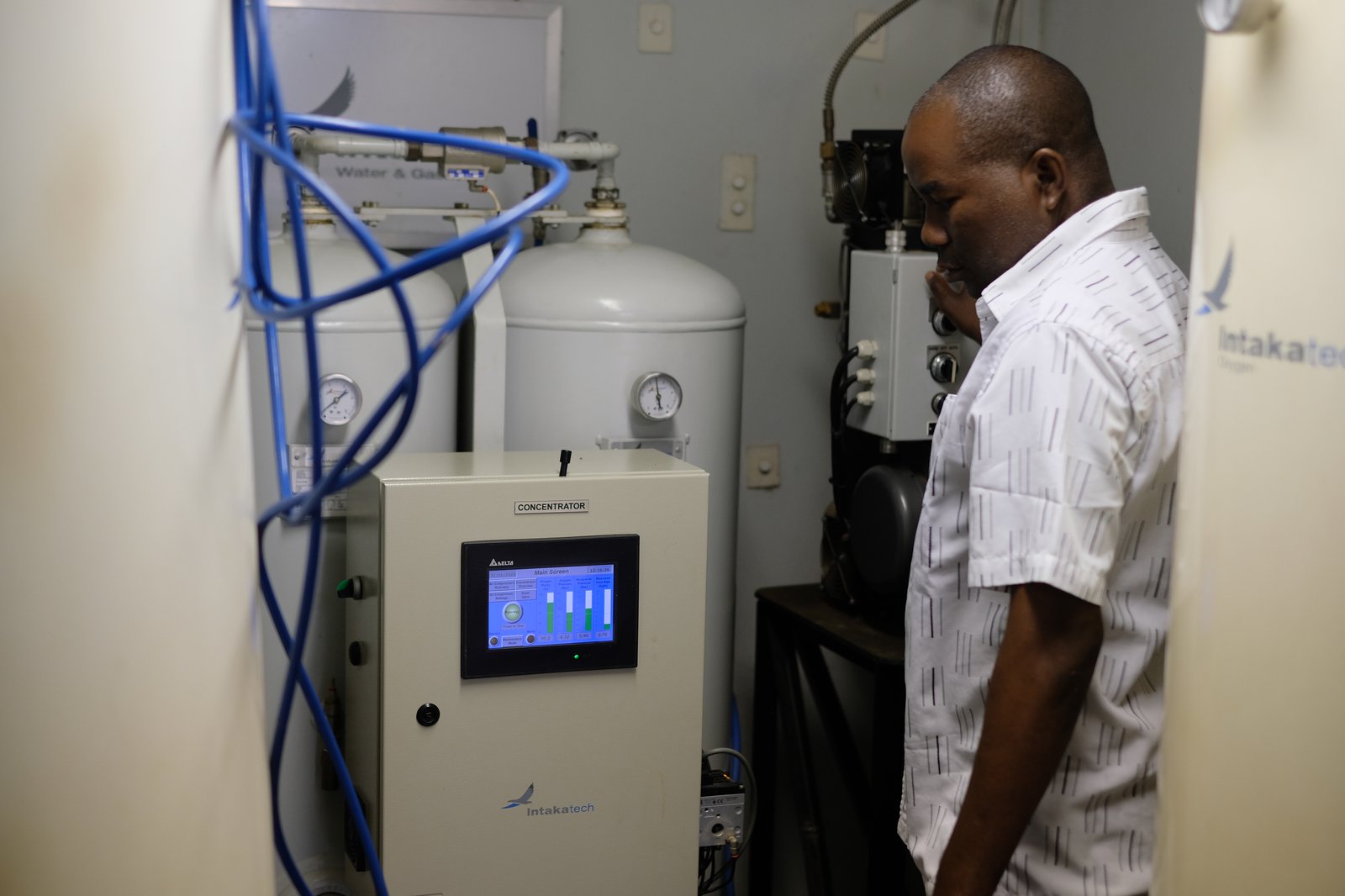Preventable deaths occur every day from hypoxemia—a severe lack of oxygen in the blood that is caused by a range of common conditions including pneumonia, pregnancy complications, and premature birth.
This condition disproportionately affects vulnerable newborns, infants, and children. Global estimates suggest that one in five sick newborns has hypoxemia upon admission to a hospital. Oxygen therapy, antibiotics, and other supportive care practices could save more than 400,000 infants' lives each year.
Moreover, pneumonia is the world’s leading infectious cause of death in children younger than five years. At least 13 percent of children admitted to a hospital with severe pneumonia have hypoxemia.
Improved oxygen delivery systems could reduce childhood pneumonia-related mortality by at least 35 percent in high-burden, low-resource settings.
An essential diagnostic tool
The standard of care for detecting hypoxemia, a pulse oximeter is a simple, noninvasive device that measures pulse rate and blood oxygen levels.
“In many low-resource health facilities, this basic device is often unavailable,” says Mike Ruffo, Director of the Tools for Integrated Management of Childhood Illness (TIMCI) project. “Without pulse oximeters, health care workers may not be able to appropriately diagnose and treat hypoxemia, which can lead to more severe illness and death in infants and children. We’re trying to change that.”
PATH’s TIMCI project, with support from Unitaid, and in partnership with the Swiss Tropical and Public Health Institute, improves access to affordable and appropriate tools, including pulse oximeters.
The project is working to introduce pulse oximeters in 360 primary health care facilities across India, Kenya, Myanmar, Senegal, and Tanzania. To ensure sustainability, this includes establishing reliable supply chains for the products, and providing training on maintenance and repair.
Meanwhile, PATH is also advancing the next generation of pulse oximeters that also measure respiratory rate, temperature, hemoglobin, and/or blood pressure—to further strengthen severe illness detection. But pulse oximeters are just one of many tools necessary during oxygen therapy.
A simple device to help newborns breathe
Continuous positive airway pressure (CPAP) is an effective treatment for newborn babies, especially preterm infants, who are born with underdeveloped lungs. But facilities with limited resources may not be able to provide a reliable power source or cover the cost required for CPAP devices or ventilators.
Without effective treatment, hypoxemia is almost always fatal.
“Health care workers are innovative,” says Patricia Coffey, PATH group leader for Health Technologies for Women and Children. “They often devise improvised solutions to treat newborns in these situations. For example, nasal bubble CPAP (bCPAP) kits are assembled using tubing, nasal prongs, and a water bottle.”
These improvised kits provide low-cost, lifesaving respiratory support without requiring power or dedicated equipment. However, they rely on a 100 percent source of oxygen and can’t blend air into the gas—an important step to avoid further health complications.
Inspired by these improvised kits, PATH, in collaboration with neonatologists and respiratory therapists at Seattle Children’s Hospital, developed a low-cost bCPAP kit that includes two oxygen blenders, which draw room air into the flowing oxygen stream to provide a safer blend of gas for newborns.
“Our bCPAP kit and oxygen blenders are inexpensive, robust, and easy-to-use devices that deliver the correct blend of oxygen and air to fit the needs of the tiniest preterm infant to larger children,” says Patricia.
“Our bCPAP kit and oxygen blenders are inexpensive, robust, and easy-to-use devices that deliver the correct blend of oxygen and air.”— Patricia Coffey, PATH group leader, Health Technologies
PATH, with support from Saving Lives at Birth, is collaborating with partners from Adara Development, Kiwoko Hospital, and the University of Washington/Seattle Children’s Hospital to conduct an operational feasibility study in Uganda to inform user-centered design in the clinical setting. Results from this study will poise this technology for market entry.
“Tools like these are crucial for improving respiratory care, but they must fit into a strong, well-functioning health system in order to have large-scale, long-term impact,” Patricia says.

A biomedical engineer at Nkatha Bay District Hospital in Malawi is checking the telemetry equipment of the facility’s pressure swing absorption plant. Photo: PATH/Zachary Clemence.
Strengthening oxygen delivery systems
The biggest barriers to oxygen therapy access are systemic—including supply, human resources, and funding constraints.
“Without informed, forward planning and sufficient financing, it can be difficult to rapidly deploy resources in countries in a way that ensures maximum impact while not overwhelming existing health care systems,” says Lisa Smith, senior market dynamics officer at PATH.
“These higher level, systemic challenges are the biggest obstacle for many countries.”
PATH partnered with the Clinton Health Access Initiative and the Every Breath Counts coalition, with support from the Bill & Melinda Gates Foundation, on the COVID-19 Respiratory Care Response Coordination project to address these challenges.
“We aim to improve reliable access to a comprehensive respiratory care treatment package—both as part of the immediate COVID-19 response and to strengthen respiratory care systems in the long run,” says Lisa, who is also director of the COVID-19 Respiratory Care Response Coordination project.
The project helps countries assess the current availability of respiratory care equipment and compare it to the forecasted need—such as in the Democratic Republic of the Congo, Malawi, Senegal, and Zambia. Government decision-makers can use this data to inform national policy on oxygen. At a global level, PATH supports global advocacy efforts to increase financing and investment for oxygen at this critical time.
PATH is working on various fronts to improve access to lifesaving oxygen therapy for newborns and children. Integrating oxygen delivery into existing health programs, especially those focused on maternal, newborn, and child health, can save hundreds of thousands of lives.
Learn more about our work here.



